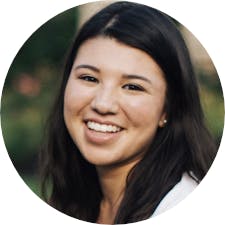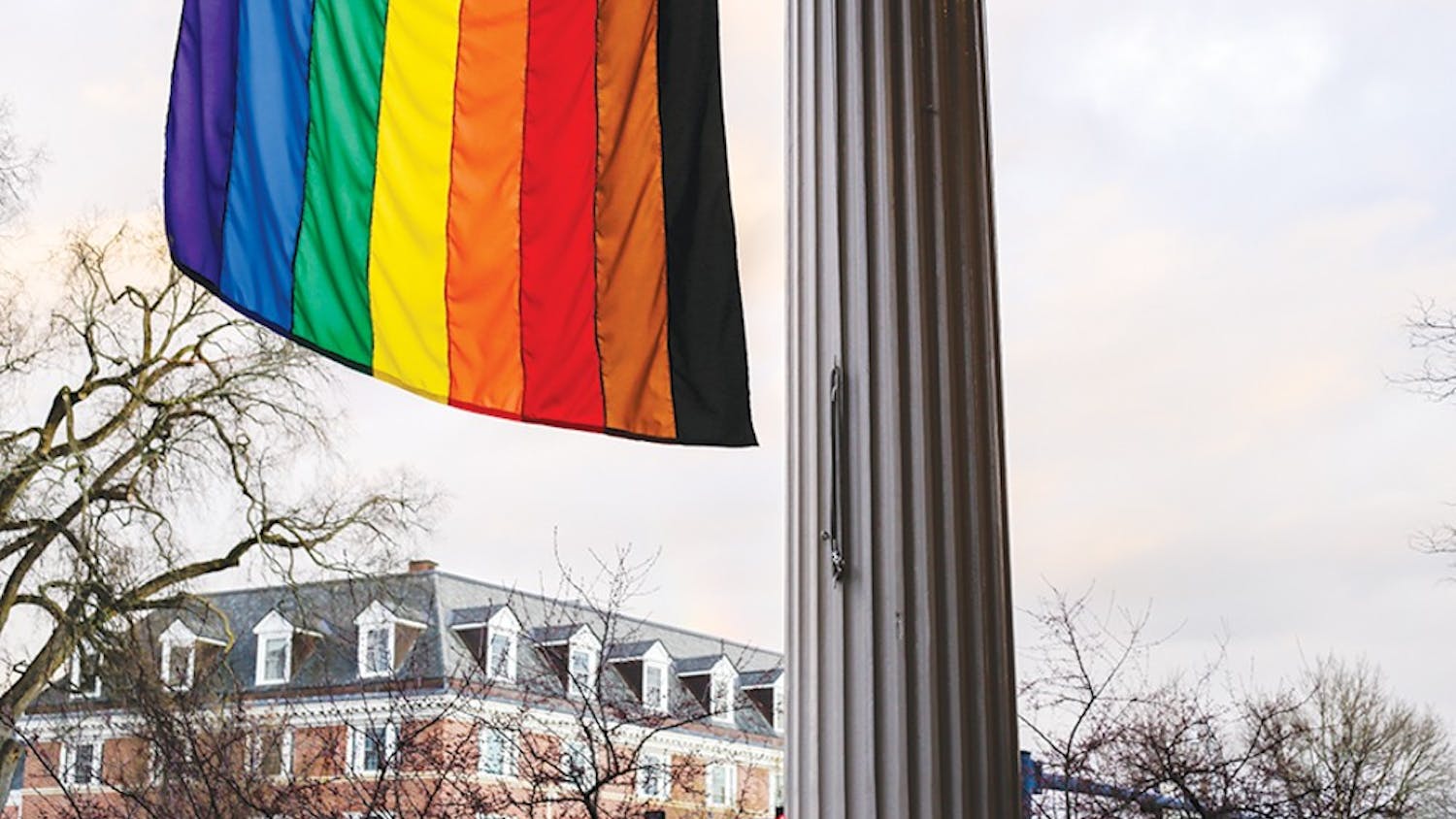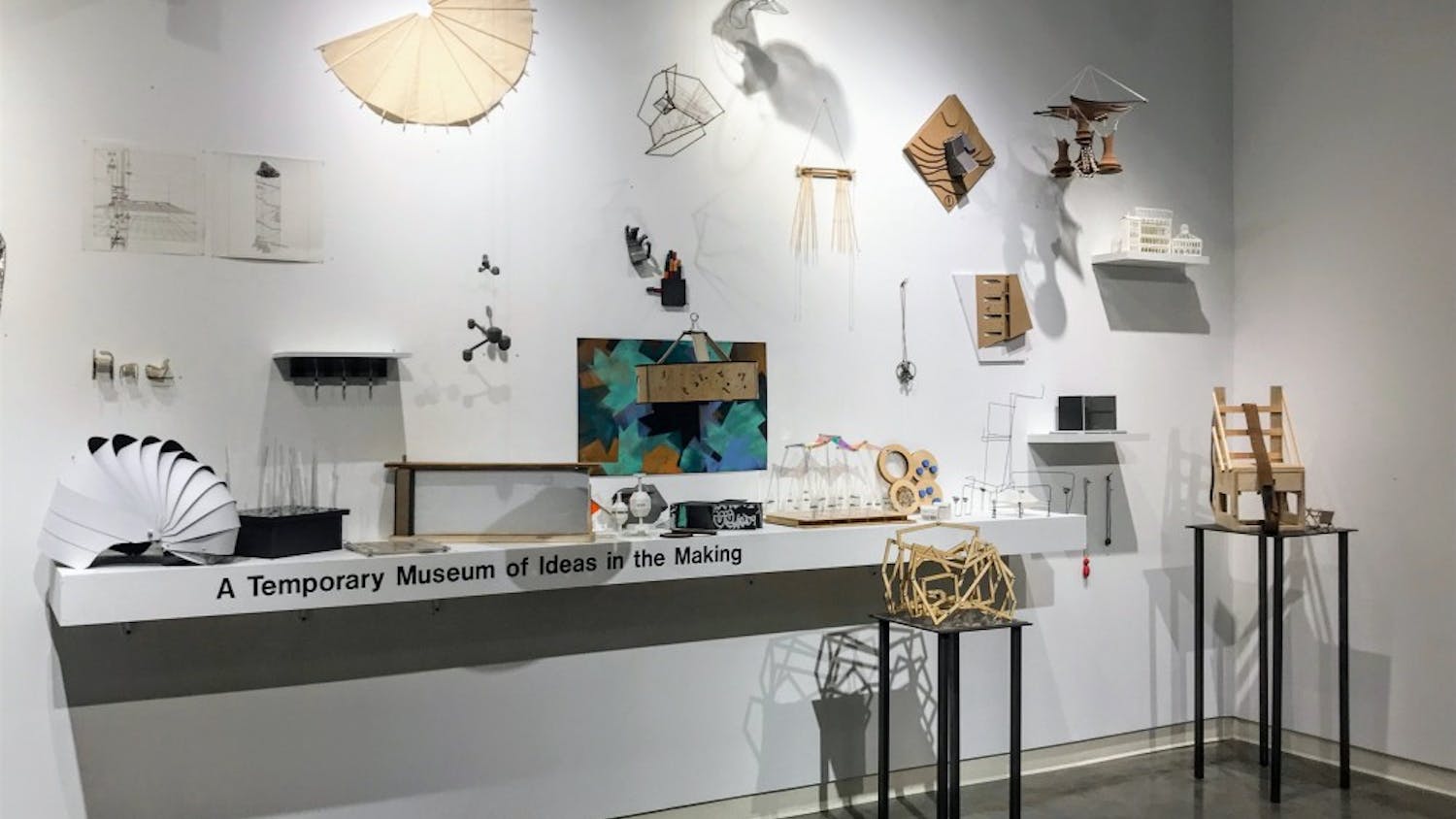Studio art professor Zenovia Toloudi’s “Technoutopias” series is currently on display in the Jaffe-Friede and Strauss Galleries, located in the Hopkins Center. An architect and artist, Toloudi explores the interactions, or lack thereof, between humans and public spaces in her current exhibit. Her work uses various materials and techniques to show this relationship and the impact of architecture on social interactions and the civil self.
Toloudi said she hopes that spectators will appreciate the importance of architecture and its ability to alter interactions. Collaborative architectural structures, as seen through “Technoutopias,” encourage communication and meaningful conversations. In an interview with The Dartmouth, Toloudi discusses “Technoutopias,” her process of creation and her ultimate artistic vision.
Could you talk about your exhibit at the Jaffe-Friede and Strauss Galleries this term?
ZT: “Technoutopias” presents my vision of working between reality and fantasy. In a way, this exhibition is inspired by a philosopher called Cornelius Castoriadis, who talked about the disconnection from the past and the lack of having a civic self. So my exhibition is about animating the social imaginary and the extinct civic self and explores utopia. My exhibit helps us imagine who we want to be and who we may need to become. Through this collection, I hope we develop a new civic vocabulary and build rituals that establish empathy and connections. And I hope a truly public and civic self is developed. “Technoutopias” tries to find a moment to move away from addiction to handheld devices and find the right place for technology. The exhibition tries to showcase a future way of making architecture and shaping our physical environment. I want to showcase this in a possible, tangible way, not in a way that is too futuristic. These works are materialized in front of you so that you believe this utopian world is possible.
What inspires your work?
ZT: It could be a reading, a lecture, an exhibition. There is always a balance between drawing from tradition and future technology. But what enables my work has to do with a condition I experience in my physical environment and I don’t find right. For example, a lack of light and windows in buildings. I am not only an artist, but an architect too. I observe the environment around me and I seek opportunities to intervene. I call this architectural activism. An example of this work could be the urban furniture I have in the exhibition, “Free-See-Saw,” which is a bench that targets the lack of interaction between people in public. I conceived this design to help people interact with each other. This bench is there to help people negotiate and collaborate and to find the right equilibrium on the bench, which is a see-saw. The bench forces people to collaborate and negotiate in order to sit down. So this shows how architecture can change the environment and people. I do this with my students too, both as an inspiration and a process. I don’t tell them what they need to do, but they identify what is wrong in a physical space and seek to improve it. In a way, my students have to create both the problem and the solution.
What is your process for creating your art?
ZT: The process is long, and many of my pieces are in series to explore related ideas and particular cultural and geographical contexts. Each piece ends with a question that I explore with the following piece. For example, there is a piece at the Jaffe-Friede Gallery that is called “Photodotes V: Cyborg Garden,” which is part of the “Photodotes” series. “Cyborg Garden” has to do with the lack of light in spaces. I was inspired to introduce plants into the work. I then found a new series of questions, as the plants die without light. The fact of decay and the unpredictable incorporates the idea of vulnerability, which cultivates empathy. There is this sequence of ideas from one installation to another. My work has to do with craft a lot. I make my art both in North America and in northern Greece, with craftspeople in each region to focus on different materials and techniques. The physical making is an important part of the work, and I see it as an act of resistance against the virtual area that we experience. Physically making the works is also an act of resistance against the crisis of the loss of craftspeople.
What has your experience as a studio art professor been like at Dartmouth?
ZT: My experience has been amazing and inspiring. My work has always combined art and architecture. I have this unique position as the architecture professor within a studio art department. This gives a lot of freedom to rethink architecture, both in terms of making and teaching, and making it more relevant to the contemporary era to rethink the fundamentals of architecture in an art department. At Dartmouth, our department belongs to the humanities, which brings a lot of intellectual rigor, critical thinking and scholarly work. This is really important both for myself and my students — not only to make art or architecture, but to combine it with theory and critical thinking. There are also a lot of interesting lectures on campus, which are not always specialized to art, but they act as a great influence and produce intellectual dialogue. Moreover, Dartmouth being a liberal arts school means that it has an interdisciplinary nature by default. Art being combined with other disciplines makes it more relevant to the world’s issues. This happens in my own research, through talks and other collaborations and through my students who come to class with knowledge from other subjects. I hope this continues to happen in the future and produces something very innovative.
How do you hope your art impacts Dartmouth’s campus?
ZT: As I mentioned, my works are between imagination and reality. I want to show that utopia is possible. This exhibition showcases this possibility and motivates the people who view it to change their attitude. I refer to the visitors of this exhibition as witnesses of the possibility of a utopia. I invite Dartmouth students, professors and others to come to the show in order to develop a collective memory among themselves.
Do you have a favorite piece to talk about in your collection?
ZT: I do not have a favorite piece, because they are all kind of my children. But “Silo(e)scapes” is different because it has two scales. The other works are all on a one-to-one scale. “Silo(e)scapes” is both architecture and art. It envisions a hybrid of a seed bank, a sharing economy and a museum for Mediterranean plant species that may disappear. The threatened native seeds are stored in transparent displays, which are also the columns of communal architecture. “Silo(e)scapes” creates this future architecture model of community. You can see Lego-like people, who are the community members and preserve the seeds’ biodiversity and Mediterranean tastes, flavors, nutrients and medicinal capacities that are threatened by environmental catastrophes. In this piece, I showcase these ideas through an architectural model of the future, but also through an immersive installation where you experience these public buildings. The experience is similar to the experience little kids have with dollhouses, where it is like you can shape the environment. The difference in scale can empower the individuals who visit to feel positive about the future, drawing from the positive attitude kids have while playing with their toys.
What would you say to current students interested in pursuing careers as artists?
ZT: I would tell them to follow their passion by committing themselves to the process of creating art. They should be fearless in expressing their ideas without worrying about the result. They should also be original and honest through their art. Finally, they should collaborate with each other, especially with students from other disciplines, because there is potential to make even more impactful work.
This interview has been edited and condensed for clarity and length.




